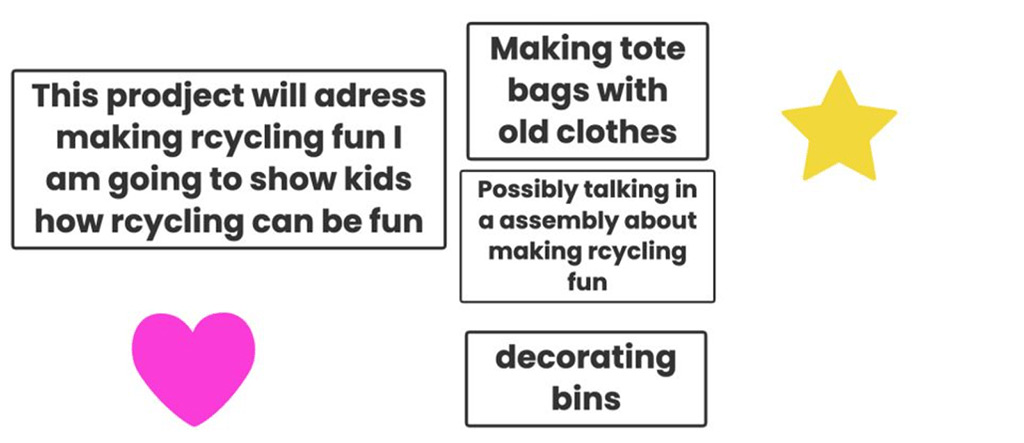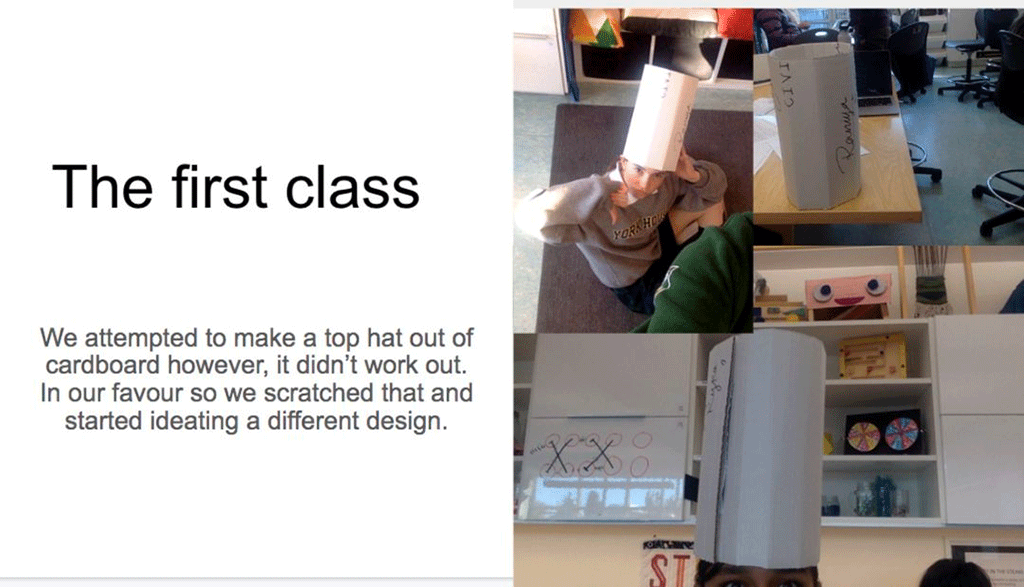In Term 1, sustainability was a driving focus for Grade 7 Applied Design Skills and Technology (ADST). Through carefully following the YHS Design Thinking Process, students were able to show their growth and understanding in the following Core Competencies:
Understanding Contexts:
The students spent time getting to know our local environment. They used their senses to engage with the school grounds and develop an appreciation for how their actions may impact the grounds. This helped them empathize with the need to be sustainable. In addition to this, they gathered real-world data about what kind of items were thrown out in classroom recycling bins.
Defining:
Through analyzing the data they collected, they were then able to define a problem and develop their own driving questions – an important part of project-based learning.
 Ideating:
Ideating:
Continuing from their defined problem, each group came up with many possible solutions and discussed the merits of their ideas. Humility was shown when some ideas didn’t make the final cut, and everyone’s voice was listened to; enabling good collaboration and a final decision for the direction of their work. Examples of the projects settled upon include: educating children about the importance of recycling or composting (through story or games), upcycling old clothes, using fashion to raise awareness of waste, and completely redesigning the school garbage bins.
Prototyping/Testing/Making:
A significant chunk of their class time was spent cycling between prototyping, testing, and making. When something didn’t work, time was spent finding alternatives. As the timeline for their project ticked along, their ideas had to be edited so that they could meet their brief and finish in time.
Sharing:
Finally, when their work was completed they were able to share their projects by creating a gallery wall exhibit. Their work is accompanied by a card of information explaining what the product is and why it was created.
ADST and STEAM at YHS:
When you think of STEAM (Science Technology Engineering Art and Math), you can’t help but wonder “how is this different from STEM, Project Based Learning, and ADST?” You’d be correct in seeing that there is an overlap between all of these. Indeed I have often said that STEAM is an umbrella term, under which falls all good cross-curricular learning. Here at YHS we use the term STEAM to highlight the importance of the arts in our cross-curricular learning opportunities, ADST classes, and Project Based Learning experiences. It’s clear that the arts played a great role in the Grade 7s work through how creative their output was.
When we start to recognize and celebrate the arts in all we do, we begin to find ways to nurture our learners and teach them in a cross-curricular fashion. Given that Nobel laureates in the sciences are 22 times more likely to be involved with the performing arts (than scientists in general), as educators, we owe it to this generation of pupils to integrate the A in STEAM.
Tom Collins
Junior School STEAM Coordinator







